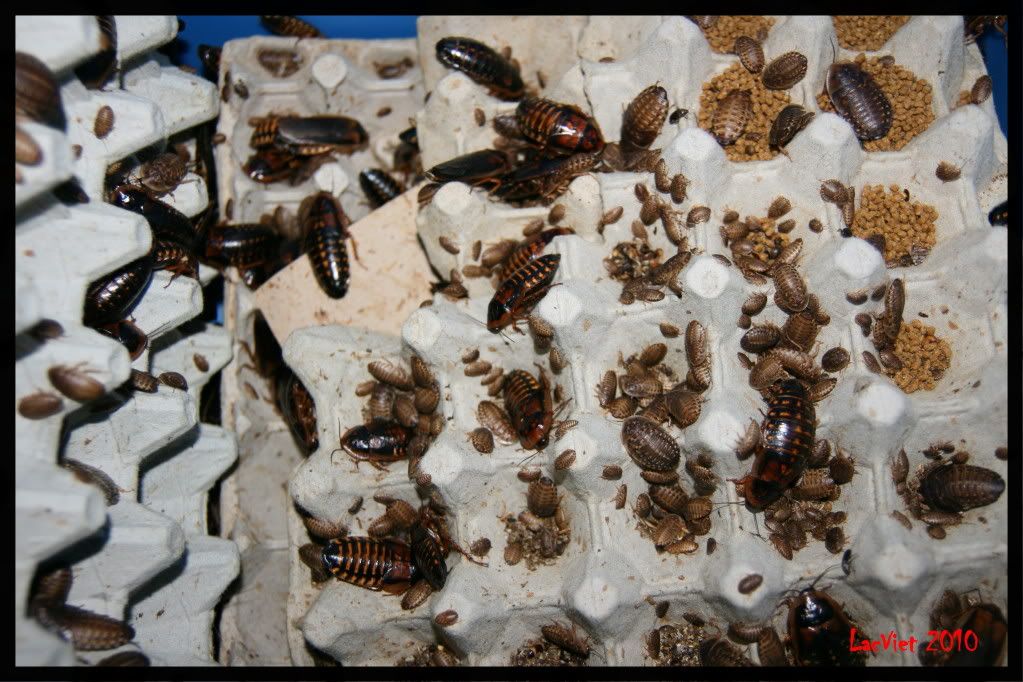If you remember, I posted a while back about my friend DT who breeds crickets, mealworms, superworms, Blatta lateralis, and Blaptica dubia (http://lacvietchoelua.blogspot.com/2010/01/build-your-own-supply-of-live-insect-to.html). I copy DT's footstep and also try to breed B. lateralis (about 1.5 years ago) and B. dubia (about a year ago). I start out with about 300 mix/adult D. dubia and about a year later, I would say that I still have at least 3,000 dubia roaches right now (very conservative number) with regular weekly feeding of about two hundred or so roaches to all of the birds for the last 3-4 months. The adult roach can reach close to 2in in length and mature at around 5 months. I think they are slow growth compare to B. lateralis, but they are slower than B. lateralis and almost no smell at all. When feeding these roaches to the shama thrush, only smallest babies or immature roaches at around 1cm can be feed as these roaches are almost round shape when at 1 inch long or less. Bigger roaches (1 inch or more in length) has relative hard shell and too big for the shama thrush to tear into small bite size. It would take very long time for the shama thrush to eat big roach so I only feed small one.
These B. dubia roaches are very easy to keep as long as some basic requirements are met. Keep them warm and provide regular food (anything from dried food for bird, fish, dog, cat, etc... to fruits, carrots, potato, and most veggies)/water are the only two requirements (beside container to keep them) to success keeping and breeding these roaches. They are very hardy and not easy to die like crickets. In no time, anyone who keep them can have lots and lots of baby roaches. Because of slow growing and mature rate, starting with few hundred roaches can be enough to feed one or two shama thrush all year round without the need to buy other live foods (but I still believe feeding variety of live foods will keep the shama thrush healthy and thrive in long term in captivity).
One other note, I found that most shama thrush will choose to eat crickets over B. dubia or B. lateralis if given a choice. They also pick crickets to feed their young over B. dubia or B lateralis if given a choice. The reason is the outer cover of crickets is much softer than the roaches and maybe the taste is better :-))




This comment has been removed by the author.
ReplyDelete